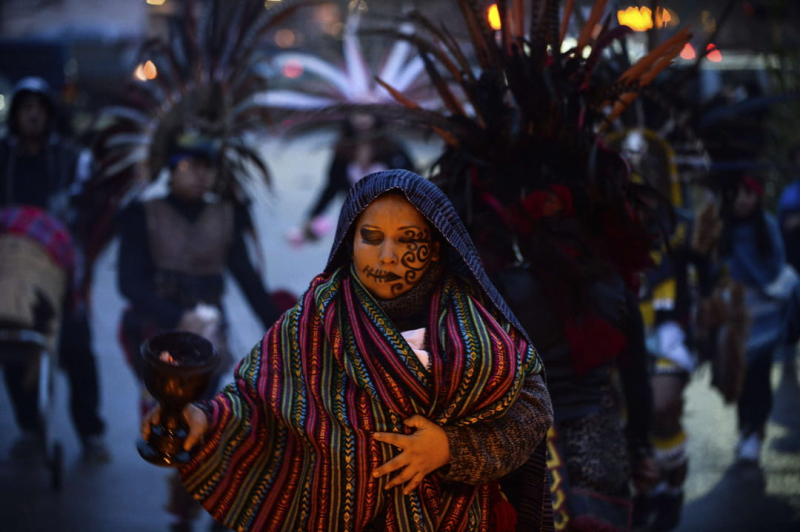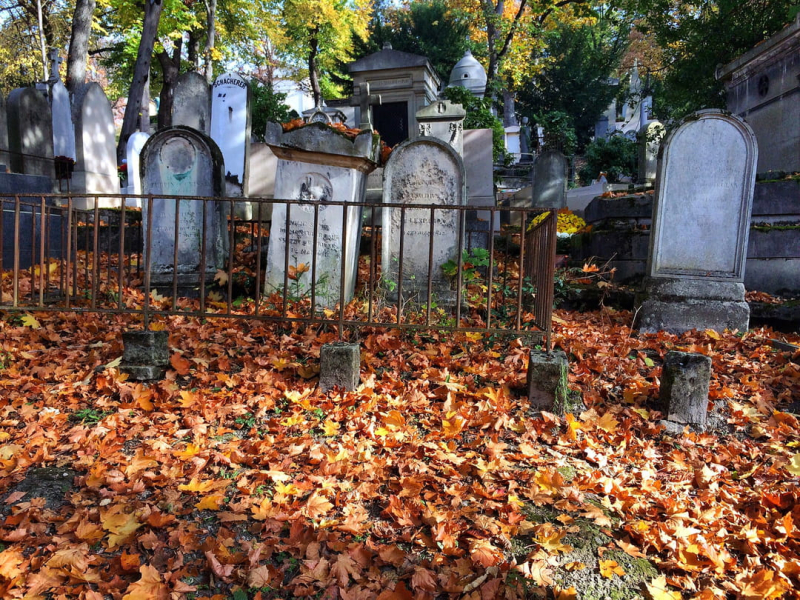ALL SAINTS' DAY. How can we explain that All Saints' Day is not the same celebration as the Day of the Dead?
[Updated October 24, 2024 à2:37 p.m.] A religious holiday, All Saints' Day is celebrated on Friday, November 1, 2024. If in the minds of many French people, All Saints' Day is the day when we celebrate the dead, …After establishing the feast of All Saints, the Church very quickly considered that it was necessary to add a new day of celebration to pray for the deceased who have not yet entered the afterlife. It was therefore decided that this day of homage to all deceased Christians would take place the day after All Saints' Day, on November 2. It was only from the 13th century that this second feast day definitively entered the Roman liturgical calendar. A point of detail largely unknown in our contemporary societies, which is nevertheless useful to recall.
After All Saints' Day comes the Day of the Dead, more commonly called the Feast of the Dead or Día de Muertos for pre-Hispanic customs. All Saints' Day is also the cousin of Halloween, a pagan festival in Anglo-Saxon countries. Halloween, All Saints' Day and the Day of the Dead… Although these three dates follow one another in the calendar, they do not have the same meaning. We tell you everything about the origin of these feasts of saints and the deceased.
Originally, All Saints' Day was a creation of the Catholic Church, which is never mentioned in the Bible. All Saints' Day, the feast of all saints, was created by Pope Boniface IV in 610 AD. The pontiff wanted to honor the memory of the martyrs among the first Christians. Indeed, converts to this monotheistic religion were massacred by the Romans at the beginning of our era. From the 4th century onwards, Christians had paid posthumous tributes to these first believers, extolling their courage and exchanging their relics.
The creation of a common feast allowed the Catholic hierarchy to group together all these unofficial celebrations. Since then, on November 1, Catholics have celebrated All Saints' Day. On this day, believers celebrate all the martyrs and saints of Christianity, known and unknown. Saints are remarkable people, given as examples for their actions. To become a saint, one must have performed miracles or acts that are particularly virtuous in the eyes of the Church, which can initiate a canonization procedure. As recalled at the beginning of this article, it is therefore not, in theory, on November 1st that we should go and put flowers on the graves of our deceased loved ones. November 2nd is in fact, in the liturgical calendar, the official day of homage to all deceased Christians.
All Saints' Day is one of the 11 public holidays recognized in France and is listed in Article L3133-11 of the Labor Code. Before the French Revolution, there were nearly 50 religious holidays in France, including All Saints' Day. In order to reduce the influence of Catholicism and for the sake of efficiency, &economically, they will be eliminated with the advent of the revolutionary calendar, which will come into force on October 6, 1793 (or 15 Vendée of Year II of the Republic). In the villages, people reluctantly accept this new state of affairs and continue to be unemployed on Saint John's Day or All Saints' Day. In 1802, Napoleon reestablished four religious holidays, one for each season: Christmas in winter, Ascension in spring, Assumption in summer and All Saints' Day in autumn. Despite its anticlericalism, the Third Republic did not reverse this religious heritage. The crisis could, however, call into question the existence of certain religious holidays: in 2012, Portugal abolished All Saints' Day from his list of days off…
200% Deposit Bonus up to €3,000 180% First Deposit Bonus up to $20,000The Feast of the Dead or Day of the Dead takes place this Wednesday, November 2: prayers are read for all the deceased, in order to ensure the salvation of their souls. The tradition appeared in the Benedictine communities, notably in Cluny, shortly before the year 1000, before spreading throughout Europe with the assent of the popes. In some countries such as Mexico, November 2 is the most important day. During Día de Muertos, entire families gather in cemeteries to make offerings (food, skull statuettes, flowers, etc.) on altars erected in honor of the deceased. The joyful nature of this holiday contrasts with our very solemn celebrations.

The Day of the Dead is celebrated in Mexico on November 2. © Aaron Lavinsky/AP/SIPA
A few days after the change to winter time, the pagan festival of Halloween precedes All Saints' Day in this series of events that truly bring us into autumn. The pumpkin festival, born in Celtic countries, is celebrated on the evening of October 31, one day before All Saints' Day. Its very name refers to the feast of the dead: the original long version, the Scottish word Allhallow-even, means “All Hallows' Eve”. From the 8th century, the Catholic Church initiated a rapprochement with the future Halloween, then a pagan festival celebrated by the Celts at the beginning of autumn under the name of “Feast of Samhain”. Pope Gregory III introduced at this time All Saints' Day or the feast of all saints at the date of November 1st, in the calendar of major Christian holidays of the Catholic Church.
Be aware that the tradition of chrysanthemums is not necessarily what you think. If originally, All Saints' Day is indeed a religious holiday (read below), chrysanthemums come from a political desire: to celebrate, at from 1919, the soldiers who fell for France during the First World War. This year, after the armistice of November 11, the centenary of which will be celebrated in a few days, France is trying as best it can to recover from the horror of the trenches. It was in this post-war context that Raymond Poincaré, then President of the Republic, asked the French to go and place flowers on the graves of soldiers who had died for their country, with a chrysanthemum.
During All Saints' Day, the flower will very quickly go beyond the strict commemorative framework and spread throughout France and Europe as the main way to pay tribute to all the deceased. Until now, candles were placed on graves during All Saints' Day. But the chrysanthemum does not always have the same meaning abroad: in Japan, it is the symbol of the Emperor (sometimes referred to as the “chrysanthemum throne”). Because the chrysanthemum is native to the Far East (Korea, China, Japan). It is said to have been created by the hybridization of several wild species. It flowers naturally in autumn and is frost-resistant: it is therefore perfectly adapted to the autumn climate of early November.

All Saints' Day is an opportunity to visit Parisian cemeteries, some of which are particularly conducive to the promenade, like the famous Père-Lachaise cemetery in Paris. © emilio – stock.adobe.com
All Saints' Day is celebrated every year in France on November 1st. This year, 2024, the date falls on a Friday. The date of All Saints' Day has had an eventful history. When Boniface IV decided to celebrate All Saints' Day, it took place on May 13th. It was on this day that the Pope consecrated the Pantheon, a Roman temple transformed into the burial place of Christian martyrs. The Pantheon celebrated all the gods, All Saints' Day will celebrate all the saints. It was around 835 that Pope Gregory IV moved the feast to November 1. This change in the liturgical calendar could have its origins in the dedication of a chapel in the Church of Saint Peter in Rome to the group of saints by one of his predecessors.

